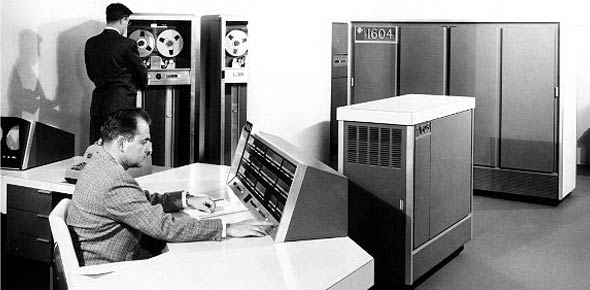Approximately how long does it take for radio frequency energy to...
Which radar subassembly ensures all circuits connected with the radar...
What radar subassembly allows the radar system to transmit and receive...
An antenna is said to be reciprocal if
An X pulse is present in a selective identification feature code train...
Which feedhorn is used only for receiving?
The shape of the beam of radar energy and its antenna pattern depend...
When a pulse of radio frequency energy is transmitted, it travels at
What characteristic of frequency does a radar target moving towards...
Which statement describes a security feature of using fiber optic...
What is the required angle of incidence necessary to get a reflection...
What does the distribution of electromagnetic energy from the antenna...
The vacuum in a cathode-ray tube (CRT)
What type of radar system uses a B-scan indicator?
What possible input voltage(s) may be supplied to the AN/UPM–155...
You can identify the maximum detection range of a radar by dividing...
What scan system uses a thin beam to cover a rectangular area by...
In which scan radar does the antenna rotate on an azimuth sweep, while...
What frequency is used for identification friend or foe/selective...
What is the AN/UPM–155 radar test set capable of testing?
Which feature of the Fluke 8025A multimeter do you use to select...
When using the AN/PSM–2 megger, how do you apply the correct...
A 10 kHz modulating signal has enough peak voltage to cause a...
Which current range on the Fluke 8025A do you select to measure 250...
If someone says, "we doubled our transmitter power;" how much is the...
What size bit combinations are allowed when using 16–phase shift...
Which selective identification feature special response explains a...
When using forward error control as a method of error correction,...
Which statement describes an advantage of using fiber optic cable?
What is the earth ground standard for communications facilities?
Which scan radar gets its name from the fact that each echo pulse from...
What target information is provided by a plan-position indicator?
What occurs because of imperfections in an optical fiber's basic...
Which indicator component produces signals that determine the overall...
What type of buffer allows the fiber optic cable to be twisted or...
Which feature of the Fluke 8025A locks the measurement into the...
What area of a digital storage oscilloscope takes digitized samples...
The scanning method used by the radar system refers to the
Attempts to reduce multipath effects on radar tracking accuracy...
What element of modulation prevents interference when sharing the same...
During a vertical redundancy check, what significance does the amount...
When you make a resistance measurement, how do you electrically...
One use for the beam-lobing switch of the multi-feedhorn system is to
What causes delayed, but separate, pulses?
What is the relationship of the bandwidth required for double-sideband...
What is the most useful way to classify fiber optic cable?
Which probe lets you use the oscilloscope to measure higher voltage...
In a typical indicator system, where is digital display data from the...
What part of the pulse code modulation process converts a continuous...
How does synchronous transmission reduce the overhead costs of data...
What is caused by low-insulation resistance between conductors?
How many probes are normally used for an earth ground tester?
What does a power reading that uses the abbreviation dBm indicate?
Which scan radar is also used in the acquisition phase by some...
How is the parity bit used in asynchronous transmission?
Which mode of triggering an oscilloscope causes a trace to be drawn on...
Which one of these is not an application of a radio frequency...
What is reduced through the use of index matching fluids on fiber...
What type of fiber has a core diameter of 50–125 micrometers...
What type of sampling does a digital storage oscilloscope normally use...
When considering light wave propagation, what is the name of the angle...
When will insulation resistance increases?
In a Raster scan indicator, how many vertical scan periods does it...
Most fiber optic links use infrared light and consist of what...
By how much does non-uniform quantizing and companding decreases the...
Which probe does not need to actually make contact with the circuit...
Which measurement is not made with a spectrum analyzer?
What type of megohmmeter do you use on paper insulated conductor...
The 10:1 power ratio represented by 1 bel can also be represented by...
What is the principle on which fiber optics work?
What is the frequency range of an audio signal generator?
In frequency modulation, the amount of oscillator frequency change is
Information capacity is increased by how many times its normal rate if...
The measurable frequency and power ranges of the HP 436A power meter...
Which electronic counter measurement counts the number of bits in a...
What scan is identified at the electronic countermeasure receiver by...
What factor determines the spacing of the sidebands in an amplitude...
When used together, what two error detection methods are 98 percent...
Sampled data points are stored in the memory of a digital storage...
Which input coupling switch position allows you to view both...
During what operation is the radio frequency blanking output used on...
In phase modulation, the carrier's
How is a radio frequency generator used?
Which electronic counter measurement represents the average bit-to-bit...
What error detection method is used for checking a data block greater...
Using the longitudinal redundancy check method of error correction,...
What type of fiber is the least efficient, with the highest dispersion...
What digital storage oscilloscope circuit compensates for high...
Which are the correct four classes of electronic counters?
















